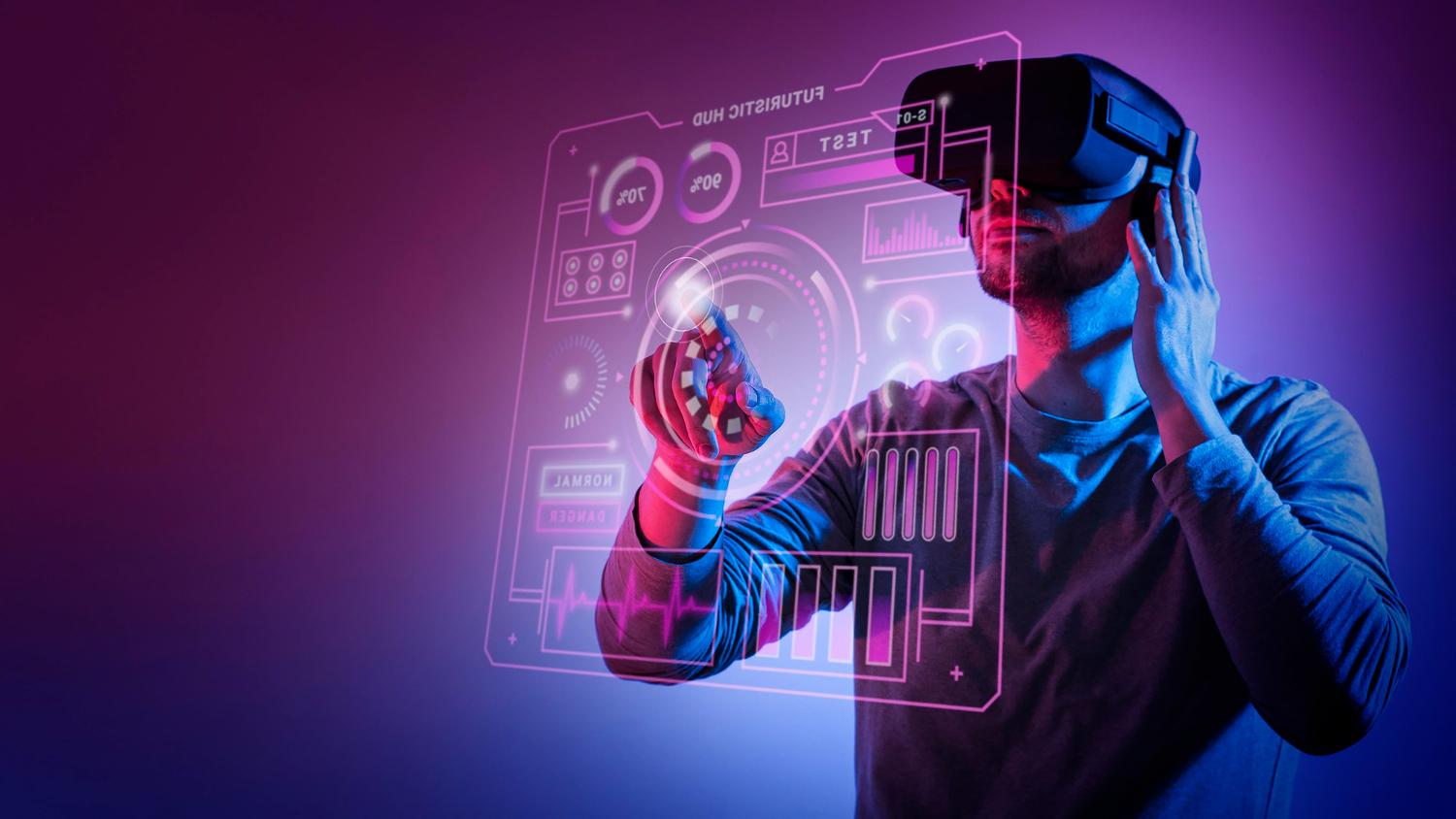Introduction:
Virtual Reality (VR) has revolutionized the way we experience digital content, transporting us to immersive virtual worlds and enhancing our perception of reality. From gaming and entertainment to education, healthcare, and beyond, VR has found applications in diverse industries. This comprehensive guide explores the multifaceted world of virtual reality, its current applications, and the future prospects that lie ahead. We delve into the technology behind VR, its impact on various sectors, the challenges it faces, and the potential it holds for transforming the way we live, work, and interact.
Table of Contents:
- Understanding Virtual Reality
- The Technology Behind VR
- Virtual Reality in Gaming and Entertainment
- VR in Education and Training
- Virtual Reality in Healthcare and Therapy
- Virtual Reality in Architecture and Design
- VR in Tourism and Exploration
- Virtual Reality in Social Interactions
- Virtual Reality in Business and Collaboration
- Challenges and Limitations of Virtual Reality
- Future Prospects and Trends in VR
- Conclusion
- Understanding Virtual Reality:
Virtual Reality refers to an artificial, computer-generated environment that simulates real-world sensory experiences. By using specialized VR devices, users can immerse themselves in a virtual environment and interact with it in a seemingly real and interactive way. VR aims to create a sense of presence and immersion, blurring the boundaries between the physical and virtual worlds.
- The Technology Behind VR:
Virtual Reality relies on a combination of hardware and software technologies to deliver immersive experiences. Head-mounted displays (HMDs) or VR goggles are used to present visual content to the user, while motion-tracking sensors and controllers enable user interactions within the virtual environment. Additionally, VR systems may incorporate spatial audio, haptic feedback, and other sensory enhancements to further enhance the immersion.
- Virtual Reality in Gaming and Entertainment:
One of the most well-known applications of VR is in gaming and entertainment. VR gaming provides a truly immersive and interactive experience, allowing players to step into virtual worlds, manipulate objects, and engage in thrilling adventures. From realistic simulations to fantasy realms, VR gaming offers unprecedented levels of engagement and excitement.
- VR in Education and Training:
Virtual Reality has tremendous potential in the field of education and training. It enables learners to engage in realistic simulations and practical experiences that enhance learning outcomes. VR can transport students to historical events, geographical locations, or scientific phenomena, making learning more interactive and engaging. Additionally, VR-based training programs are used in industries such as aviation, medicine, and military to simulate complex scenarios and develop essential skills.
- Virtual Reality in Healthcare and Therapy:
The healthcare industry has embraced VR for various applications, including pain management, rehabilitation, and mental health therapy. VR can distract patients from pain during medical procedures, provide interactive rehabilitation exercises for physical injuries, and create immersive environments for exposure therapy in treating phobias and post-traumatic stress disorder (PTSD). It also holds promise in addressing conditions like anxiety, depression, and autism.
- Virtual Reality in Architecture and Design:
In the field of architecture and design, VR is used to create realistic virtual walkthroughs and visualizations of building designs. Architects and designers can immerse themselves and their clients in a virtual representation of a project, allowing for better visualization, feedback, and decision-making. VR enables stakeholders to explore and experience spaces before they are constructed, leading to more informed design choices and improved project outcomes.
- VR in Tourism and Exploration:
Virtual Reality has transformed the way we experience tourism and exploration. It allows travelers to virtually visit destinations, historical sites, and landmarks, providing a glimpse into different cultures and environments. VR can also simulate extreme environments, space exploration, and underwater expeditions, offering unique and educational experiences that are otherwise inaccessible to most people.
- Virtual Reality in Social Interactions:
VR has the potential to revolutionize social interactions by creating virtual social spaces and facilitating communication between people from different locations. Virtual chat platforms and social VR experiences enable users to meet, interact, and collaborate in virtual environments. This technology has the potential to redefine social networking, remote teamwork, and even long-distance relationships.
- Virtual Reality in Business and Collaboration:
VR is increasingly being used in business settings for collaboration, training, and product development. Virtual meetings and conferences can be held in immersive environments, enhancing communication and eliminating the need for physical presence. VR simulations can also aid in product design, allowing designers and engineers to visualize and test prototypes before physical production, reducing costs and improving efficiency.
- Challenges and Limitations of Virtual Reality:
While Virtual Reality offers immense potential, it also faces certain challenges and limitations. These include the high cost of VR hardware, the need for powerful computing systems, motion sickness in some users, and the potential for isolation in prolonged VR experiences. Additionally, content creation for VR can be resource-intensive and requires specialized skills.
- Future Prospects and Trends in VR:
The future of Virtual Reality is promising, with ongoing advancements and innovations. Emerging technologies like 5G connectivity, haptic feedback systems, and eye-tracking are set to enhance the VR experience further. The growth of augmented reality (AR) and mixed reality (MR) will also contribute to the evolution of immersive technologies. VR is expected to become more accessible, affordable, and seamlessly integrated into various aspects of our daily lives.
- Conclusion:
Virtual Reality has ushered in a new era of immersive experiences with vast applications across industries. From gaming and entertainment to education, healthcare, and beyond, VR has the power to transform the way we live, work, and interact. As technology continues to evolve, the future prospects of VR are exciting, and its potential for innovation and impact on society is immense. Embracing this transformative technology opens up a world of possibilities, where virtual and physical realities merge to create extraordinary experiences.
In conclusion, exploring the world of Virtual Reality unveils a captivating realm of possibilities that go beyond entertainment, paving the way for transformative applications in education, healthcare, design, business, and more. By understanding the technology, current applications, and future prospects of VR, we can harness its power to redefine the way we perceive and interact with the world around us.





